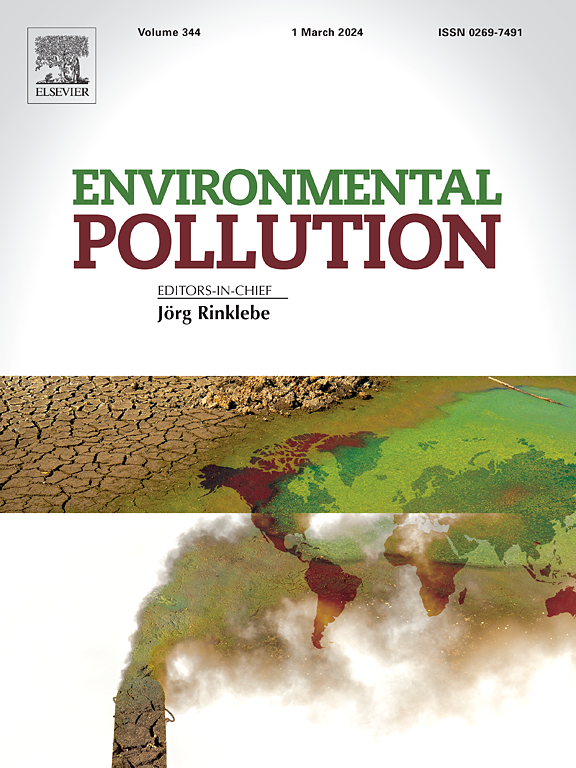Distribution and Characteristics of Microplastics in Fluvial Sediments from the Koshi River Basin, Nepal
IF 7.6
2区 环境科学与生态学
Q1 ENVIRONMENTAL SCIENCES
引用次数: 0
Abstract
Microplastics (MPs) are emerging contaminants found in various ecosystems including oceans, lakes, rivers, sediment air, and soil. Mapping of MPs in different deposition zones in fresh water sediment is important to identify their potential sources, sink, and transport mechanism. In this study, MPs were analyzed in sediment samples from Arun, Tamor, and Koshi Rivers in eastern Nepal. A total of 78 samples from 26 sites were collected from three independent deposition regions i.e. recent deposition (R0), recent past deposition (R1), and past deposition (R2) during monsoon season in 2023. All samples were analyzed following standard methods involving drying, peroxidation, density separation, microscopic examination and chemical identification by FTIR. In all the river basins differences in MPs count, color, and morphology were observed in three deposition regions. In Tamor basin the MPs count ranged from 3140-9500 MPKg-1, 3800-9420 MPKg-1, and 3180-9700 MPKg-1 in R2, R1 and R0 regions, respectively. The mean abundance was found higher in downstream especially in Koshi River. The predominant shapes, sizes, and colors found in all three river basins were fragment (52.5%), 20-100 μm (58.86%), and black (33.76%). The particles were identified as polyamide, polypropylene, polyvinyl chloride, polysulfone, nylon, and, polyether ether ketone. The pollution risk assessment indicated minimal MPs contamination upstream and moderate contamination downstream. Finally, principal component analysis (PCA) and land use and land cover change (LULC) data were utilized to identify the potential sources of MPs. Agricultural and anthropogenic sources were identified as major contributors to the MPs load. This study provided baseline data for MP concentrations and their potential sources in Arun, Tamor, and Koshi river sediments. This information could be important for future MPs mitigation strategies.

求助全文
约1分钟内获得全文
求助全文
来源期刊

Environmental Pollution
环境科学-环境科学
CiteScore
16.00
自引率
6.70%
发文量
2082
审稿时长
2.9 months
期刊介绍:
Environmental Pollution is an international peer-reviewed journal that publishes high-quality research papers and review articles covering all aspects of environmental pollution and its impacts on ecosystems and human health.
Subject areas include, but are not limited to:
• Sources and occurrences of pollutants that are clearly defined and measured in environmental compartments, food and food-related items, and human bodies;
• Interlinks between contaminant exposure and biological, ecological, and human health effects, including those of climate change;
• Contaminants of emerging concerns (including but not limited to antibiotic resistant microorganisms or genes, microplastics/nanoplastics, electronic wastes, light, and noise) and/or their biological, ecological, or human health effects;
• Laboratory and field studies on the remediation/mitigation of environmental pollution via new techniques and with clear links to biological, ecological, or human health effects;
• Modeling of pollution processes, patterns, or trends that is of clear environmental and/or human health interest;
• New techniques that measure and examine environmental occurrences, transport, behavior, and effects of pollutants within the environment or the laboratory, provided that they can be clearly used to address problems within regional or global environmental compartments.
 求助内容:
求助内容: 应助结果提醒方式:
应助结果提醒方式:


